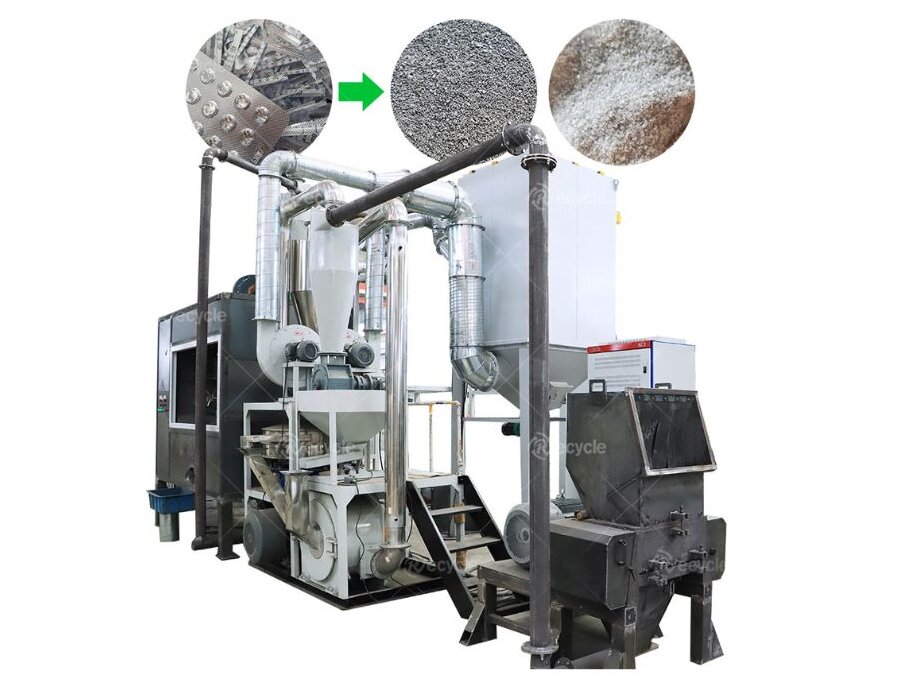Aluminium Blister Recycling Machine for pharmaceutical waste disposal.
The Challenge of Medical Blister Waste
Medical blister packs, commonly used for packaging tablets and capsules, are composed of aluminium and plastic composites. While these materials ensure the safety and efficacy of medications, they pose a significant environmental challenge at the end of their lifecycle. Traditional disposal methods, such as incineration or landfill, contribute to pollution and resource wastage. According to industry estimates, billions of blister packs are discarded annually, creating an urgent need for sustainable recycling solutions.

Aluminium Blister Recycling Machine for pharmaceutical waste disposal
How the Aluminium Blister Recycling Machine Works
The Aluminium Blister Recycling Machine employs a sophisticated, multi-step process to recover valuable materials from waste blister packs:
Crushing: The blister packs are shredded into small pieces, typically around 10mm in size.
Grinding: The pieces are further pulverized into fine powders using a water-cooled grinding system to prevent overheating.
Separation: An electrostatic separator is used to isolate aluminium from plastic, achieving a purity rate of over 99%.
Dust Control: Advanced pulse dust collectors ensure a clean and safe working environment, minimizing environmental contamination.
This fully automated process, controlled by a PLC system, requires minimal human intervention and can process up to 800 kg of waste per hour, depending on the model.
Global Adoption and Future Prospects
The demand for aluminium blister recycling machines is growing worldwide. For instance, a high-capacity machine was recently installed in Algeria, where it successfully processes medical blister waste with a separation rate exceeding 99%. For more information on how to integrate this technology into your operations, contact leading manufacturers like us today.



